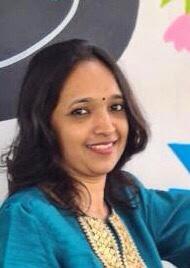Exhibition Blog (22-23) – EKAM
As teachers, we strive to provide our students with engaging and meaningful learning experiences that prepare them for success in the future. The PYP exhibition is one such experience, where students are challenged to explore complex topics and present their findings to the school community, their family, friends, and IB community.
But how can we make this experience even more enriching and impactful for our PYP 5 students? What if we shifted the focus of the exhibition process from simply presenting information to empowering our students as independent researchers and critical thinkers through a driving conceptual lens approach? It’s great to mention that our exhibition process at Sreenidhi International school included a focus on driving conceptual lenses and independent research before group synthesis. This approach allowed students to develop a deeper understanding of their topics and encouraged them to think critically about how their individual research fits within a broader conceptual framework.
It’s not uncommon for students to question why they are working together in a group, so we synthesized their topics under one umbrella theme – How we organize ourselves, which encouraged them to see the connections and relationships between their individual research projects. This led to a more cohesive and unified presentation thatshowcased the intellectual depth of their thinking and understanding. I am excited to announce that as the homeroom teacher for PYP5, I had the pleasure of witnessing my students make meaningful connections between their experiential learning trip to Yercaud and real-life issues such as the lack of good public toilets and the impact of construction on air pollution in Hyderabad. One of my students even drew a connection to her grandmother’s story of not being able to attend medical college.
These connections to real-world problems provided a valuable opportunity for my students to develop their research, communication, and social skills as they collaborated to inquire about these issues. The exhibition was inaugurated with the lightning of a lamp by Executive director and Managing trustee Ms Sarithha Katkenneni and the Leadership team followed by the SIS talk. It was the great opportunity for students to showcase their creativity and share their thoughts on important issues. It’s always inspiring to see young people taking an active interest in the world around them and using their voices to advocate for positive change. All grade 5 students sang a song on ‘togetherness’ and performed a skit which was an excellent way to showcase the different issues explored by the teams and to validate the theme of “EKAM” – Together to create a peaceful world, which means unity in Hindi. It’s a powerful word that speaks to the idea of working together to create a more peaceful world.
It’s great to see that the students not only learned about important issues, but also took action and created a platform to share their ideas with others. Throughout the PYP exhibition journey, students delved into several pressing issues, starting with natural disasters. They researched the various types of natural disasters and their impact on communities and the environment, as well as the role of human activities in exacerbating them. To mitigate their impact, students developed models for constructing high-rise buildings and a bed with airbags. In addition to this, students explored gender equality and launched a book called Equality of Genders, advocating for the same. They also examined the impact of tourism on the environment and ways to promote sustainable tourism practices, using De Bono’s six thinking hats to propose innovative solutions. Lastly, the students investigated the issue of air pollution, studying its sources and effects on human health and the environment. To raise awareness, they created posters, videos, and models of an ideal city, and proposed solutions such as using renewable energy sources and promoting public transportation.
Throughout the exhibition, students developed different IB learner profiles attributes, such as principled, communicator, and reflective. They learned how to apply these profiles in their research and inquiry, as well as in their interactions with others. For example, students demonstrated the principled profile by showing integrity and honesty in their research and by respecting the opinions and perspectives of others. They also showed the communicator profile by effectively conveying their ideas and findings to others and by actively listening to feedback. Additionally, students demonstrated the reflective profile by reflecting on their learning and growth throughout the exhibition and by using this reflection to improve their future work. The exhibition presentations were varied, interesting, and engaging, demonstrating the intellectual depth of their understanding. It was a joy to witness my students taking ownership of their learning and making a positive impact in the world around them.
As I conclude this PYP exhibition blog, I can’t help but feel proud of our students’ accomplishments and the growth they have demonstrated throughout the process. We have seen how allowing students to make sense of their topics through a driving conceptual lens, and empowering them as independent researchers and critical thinkers, has resulted in deeper understanding and intellectual growth.
I hope that this approach has not only prepared our students for success in their academic journey but has also equipped them with valuable life skills that they can apply in their future endeavors. I would like to express my gratitude to everyone who has contributed to the success of this event, including the HOS, PYPC, APYPC, mentors, parents, support staff, and administrative team. I look forward to seeing the impact that our students will continue to make in their communities, and I am excited to see what the future holds for them.
Author Name : Teena Murti
